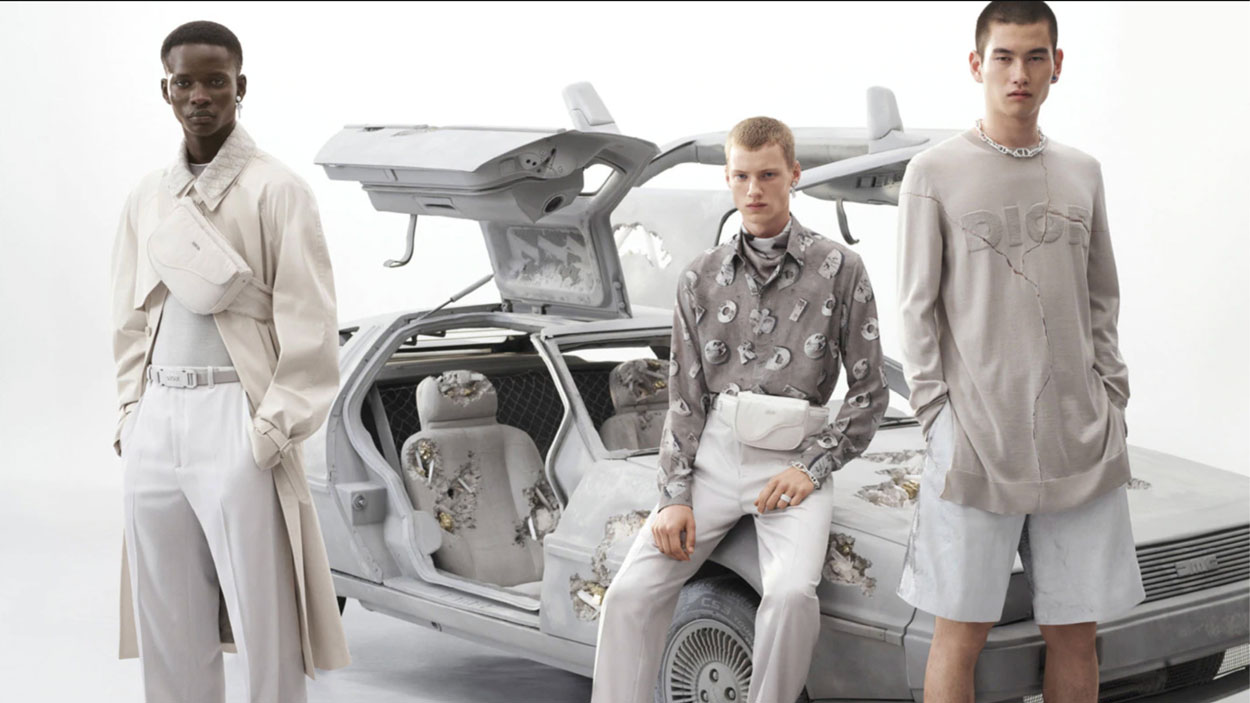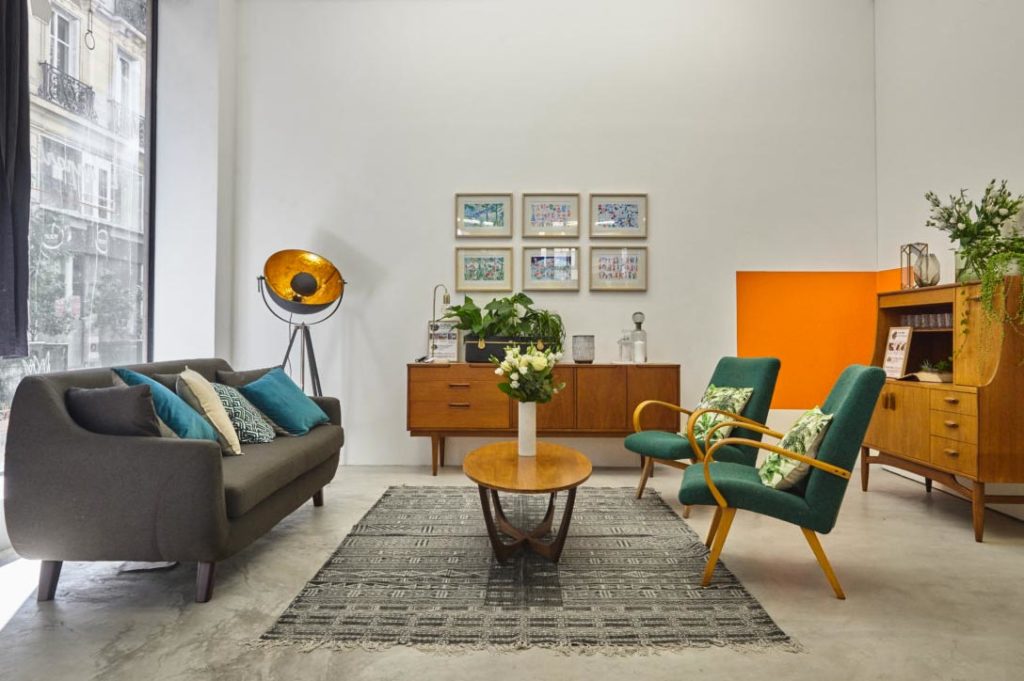-
Passionate Team // What does the future hold for products in the age of social and environmental ecology ?
What does the future hold for products in the age of social and environmental ecology ? Our agency has looked into this question….
Passionate Team // What does the future hold for products in the age of social and environmental ecology ?
No one can deny the changes that are currently taking place: shelves of loose, unpackaged products in supermarkets, the success of brands advocating respect and the environment such as Patagonia and the explosion of entrepreneurship…
As a design agency, we asked ourselves the question: what does the future hold for products in the age of social and environmental ecology ?
A new relationship with objects
While the large industrial companies direct their efforts towards biodegradability, which would make it possible to maintain the current system of consumption by blurring the waste problem, another solution is developing more discreetly : sustainability.
Today it is obvious that resources must be protected and optimised. To do this, we need a new relationship to objects. Because you can’t have sustainability whithout respect. Taking a nosy look in my neighbour’s garden, I saw a bodyboard that has been lying at the foot of a tree for weeks and an electric bicycle out in the rain… This type of behaviour, made possible by mass production and the derisory cost of the objects, would have been unthinkable at the beginning of the last century. And it will be again in the near future, because of environmental necessities.

The second essential point for durability is, of course, manufacturing quality. A well-made, robust product lasts over time. Today, manufacturing should be geographically close to its market to improve its social and ecological impact. For the time being, these two major constraints inevitably lead to higher production costs.
Finally, keeping an object for a long time is easier if it has a very high value in the eyes of its owner. If the object is of high manufacturing quality, its financial value will of course often be higher, but that’s not enough. It is also essential for the perceived quality of the object to be very high. We are talking here about its desirability, its exclusivity and the values that possessing it embody to others. On this point, the work in terms of product design (aesthetic emotion, daily physical relationship to the object) and brand (values, vision, inspiration) is essential.
We can see that high-end brands have shared these values of sustainability for centuries. However, they are rarely held up as examples by the general public, as this was a niche market. But here again, changes are underway.
A new relationship with consumption
Having the means to access comfort is a struggle that has always been and will always be universal. The Boomers’ solution, currently the most widespread, is economy of scale through mass production and cost-killing. However, the Millenials, Gen Z and soon the Alpha generation consume according to a new model, without having realised that it is a potential solution. But, it is their current habits that will be the new standard for tomorrow, because they will one day represent the majority of the population.
I take a close interest in trends in the fashion world because I consider it to be an incubator for consumer trends in many other markets. It’s very clear that the “Nike Air Max – Lacoste cap” generation (1) attaches a lot of value and meaning to their shopping choices because they are looking for exclusivity. They are therefore ready to pay the price by giving up other purchases that they feel are less essential.

According to Euromonitor forecasts for 2020, half of luxury brand consumers will be under 30 years old (2). This forces the big brands to develop their product range to cater to this dominant customer segment. This is why we can see Louis Vuitton choose Virgil Abloh as its artistic director or Dior collaborating with Stussy or its latest collection…
The rules have changed and we no longer sell the same things to young people… and young people are tomorrow’s adults.
Objects go back to being investments
Today, apart from a house, professional equipment or certain luxury goods, when you buy an object, you do not expect to get part of your money back or to pass it on to the next generation. But this was the case before the Boomer generation. Objects had a purchase value, they were kept it over a long period of time and were passed on. Objects were not trivial.
Today, the second-hand market is booming because it has become structured and on-line.
The buying experience is improving and is becoming similar to buying new products for certain platforms such as Vestiaire Collective, The Realreal, Grailed…
In 2017, Leboncoin recorded €27 billion in transactions (excluding property) (3), more than twice Decathlon’s 2018 revenue, with an increase of nearly 3% per year. In 2019, Vinted posted €700-800 million in France (4), i.e. three-quarters of H&M’s French sales (5).
If a product spends a long time on the second-hand circuit, the wealth generated benefits a multitude of players: strategy, design, marketing and brand agencies, raw material suppliers, processors, distributors, successive second-hand resale platforms and soon-to-be-end of life (6). So, the real cost of using the product is low and safe (purchase price minus resale price).

First, second and third hand quality objects have decreasing prices. However, their use and emotional value remains the same. Buying new is becoming a luxury again.
We need to create value that is shared better, with fewer raw materials. Consuming high value-added products with a dynamic second-hand market is not a breakthrough solution, but a natural evolution that seems to be on the way.
New avenues of research
Economy of functionality, such as leasing, is part of these new proposals. For example, Michelin now offers to sell not tyres but kilometres of use. Rethinking its offer in terms of service rather than product means that objects have to be more durable. However, the value remains centred on a limited number of financial players and does not benefit (or only slightly) small structures.
It is also essential to search for materials with a lower impact. However, these should not lower the quality of products, nor be used as an excuse to give a second wind to mass consumption or “single-use” modes of consumption. Plastics or composite materials are exemplary in their performance and durability. They must be used wisely. A high-performance product will enhance the user experience and therefore market acceptability.
The challenge of eco-design could therefore be to succeed in consuming better by choosing among objects those that make the most sense and by giving them more value.
- The Incomplete Highsnobiety Guide to Street Fashion and Culture, Gestalten
- Virgil Abloh, Figures of Speech, MCA Chicago
- Daniel Arsham, monographie, Rizzoli Electa
Photo credits : 1/ Outercraft x Smog Films 2/ Surfrider Foundation 3/ Dior x Daniel Arsham & Delorean 4/ Leboncoin
